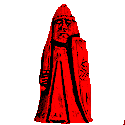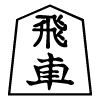Piececlopedia: Rook
Historical notes
Except for gaining the ability to castle, the Rook has remained the same since Chaturanga, which is widely regarded as the first form of Chess. Its original name is probably Ratha, which is Sanskrit for chariot. In Chinese Chess and Korean Chess, the Rook is still known as a Chariot (Ju in Chinese; Tcha in Korean). It is known as a Flying Chariot (Hisha) in Shogi, the Japanese form of Chess. When the Persians got Chess from India, they renamed this piece the rukh, which is the Persian word for chariot. Davidson suggests that this word originally referred to a soldier or hero, and that it acquired the meaning of chariot only by extension, as in a chariot driver being the hero of a battle. But Murray points out that no one has shown that rukh was ever used where one would expect the usual Persian word for hero. Murray rejects the theory that it meant hero and maintains that it meant chariot.
When the Arabs learned Chess from the Persians, they kept the name rukh, which sounded like the Arabic word for a giant mythical bird, known in English as a roc. Davidson maintains that the word did not mean chariot in Arabic. When the Italians got the game from the Arabs, the name of rukh was italianized to rocco, which sounded like rocca, the Italian word for fortress. At that time, mobile towers were popular instruments of war. (The Dabbabah is another Chess piece named after this mobile tower.) This led to the tradition of calling the piece a tower. It was called torre in Spanish, tour in French, Toren in Dutch, and Turm in German. English merely tranliterated rukh into Rook, but even English speakers began representing the piece as a tower, and many English speakers frequently call the piece a Castle.
Movement
The Rook moves an arbitrary number of spaces in any orthogonal direction. It may not pass over occupied spaces, and it ends its move by occupying an empty space or by capturing an enemy piece.
Movement Diagrams
|
|

|
Vocabulary: Orthogonal
The Rook moves orthogonally. This is movement in a straight line along a series of spaces connected by shared sides. When any two spaces share a common side, they are said to be orthogonally adjacent. On a regular chessboard, orthogonal movement is vertical and horizontal. On a hexagonal chessboard, two orthogonal lines will be slanted, and the other will be vertical or horizontal, depending on the orientation of the board. In the diagram of a hexagonal board shown just above, orthogonal movement passes through the even hours of a clock face. This board has a vertical orientation. With a horizontal orientation, orthogonal movement would pass through the odd hours on a clock face.
Alternate Images
Click on an image to view the full piece set it belongs to.
Chess
|
Shogi
Xiangqi
|
References
Davidson, Henry A. A Short History of Chess, 1949.
This is an item in the Piececlopedia: an overview of different (fairy) chess pieces.
Written by Fergus Duniho and Hans Bodlaender. Square Diagram by Ben Good.
WWW page created: September 9, 1998.



